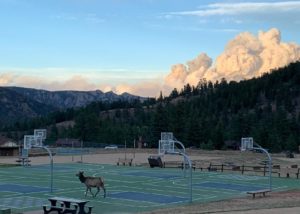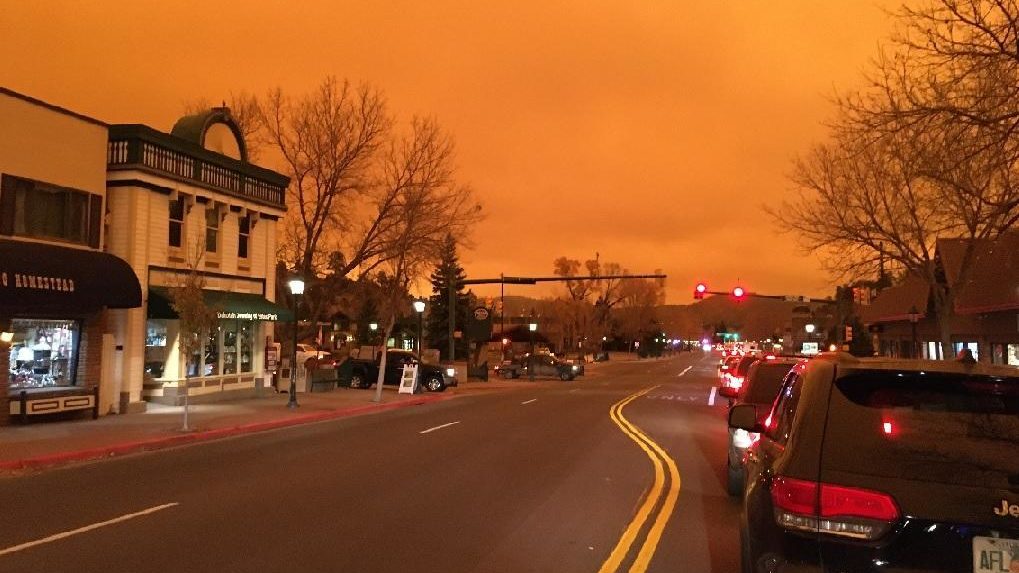A Close Call for Estes Park, Colorado
All eyes turned to Estes Park, Colorado on October 21, 2020 when the East Troublesome Fire, which originated west of Rocky Mountain National Park (RMNP) near Grand Lake, jumped the continental divide and began moving eastward. Due to the location of the spot fie, multiple evacuation orders were quickly issued by the Larimer County Sheriff’s Office and a mass migration began down Highway 34 in the Big Thompson Canyon. It was a long and difficult night for firefighters battling the fast-moving fire front with sustained winds and gusts up to 70mph. Over the next 48 hours the residents of Estes Park waited anxiously for good news to come, and it did. Thanks to the incredible efforts of fire fighters, first responders and community leaders and the help of fuels reduction treatments in the park which created a “catcher’s mitt” that slowed the fires progression.

Photo Credit-Inciweb
Catcher’s Mitt Provided An Upper Hand
In recent years, RMNP staff has been reducing fuels in the areas of Moraine Park and Upper Beaver Meadows through thinning operations followed by pile burning and prescribed fire. The concept of a catcher’s mitt was little known to most people before Operations Chief Paul Delmerico explained the value of the fuel’s treatments in RMNP to their firefighting efforts. In the operations update for Friday October 23 Paul explained, “RMNP has done a tremendous job with their fuel treatments in this area, giving us a really good advantage in here before we were even able to have an assessment from our folks, so kudos to these folks for doing that. It’s given us the upper hand.”
Fuels Reduction Work in RMNP
In June of 2012, RMNP Staff completed a new Fire Management Plan (FMP) which increased the park’s ability to adequately manage fuels adjacent to at-risk communities, park infrastructure, and natural and cultural resources. The 2012 FMP update expanded the area where fuels treatments were permitted, focused primarily along the park’s eastern and western boundaries. Whereas, the previous FMP limited fuels management activities (including prescribed fire). In a recent interview with 9News, RMNP Public Affairs Officer Kyle Patterson said, “Over the years we’ve made a lot of effort for fuels reduction. We do all that so we can be ready and so we can try to catch it before it heads into the Estes Park community.” By tying these treatment areas into existing roads and the previous Fern Lake Fire burn area of 2012 firefighters had something to work off of in this otherwise inhospitable terrain. Unfortunately public misconception about the importance of fuels reductions work in the park and elsewhere can hinder progress. “It’s hard sometimes for people to accept when you’re taking down trees or doing pile burning or lighting a match in areas to do prescribed burns”, said Patterson. However the value of this work can’t be understated as the residents and business owners in Estes Park are now well aware. While “Thompson Zone” of the East Troublesome Fire remains active and still poses a threat, fire managers and park officials remain optimistic that they will be able to “catch” any future spread and containment will be achieved.
Protecting the Big Thompson Watershed
Peak to People is pleased to be working with the Big Thompson Conservation District on several forest health projects aimed at reducing fuels and protecting water supplies and local communities from severe wildfires. To learn more about proposed and funded work to improve forest health in Northern Colorado visit the Watershed Health Outcomes Project Tracker website.
